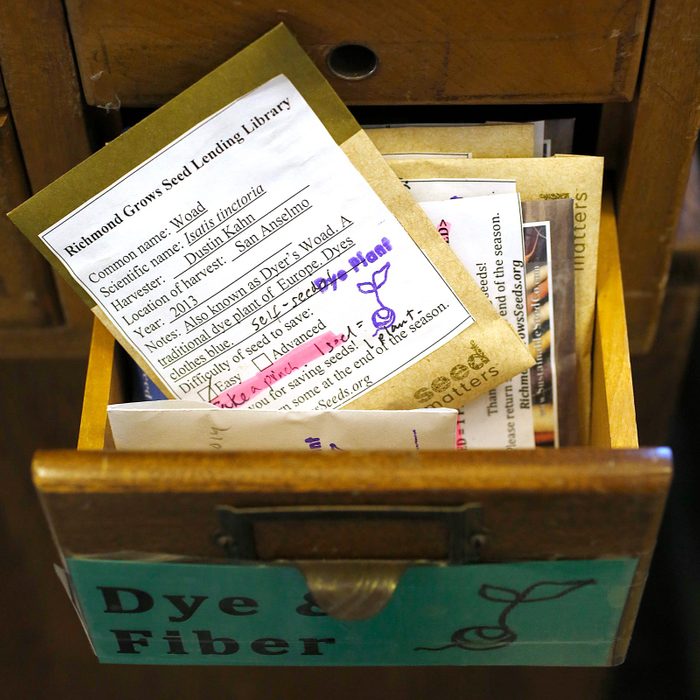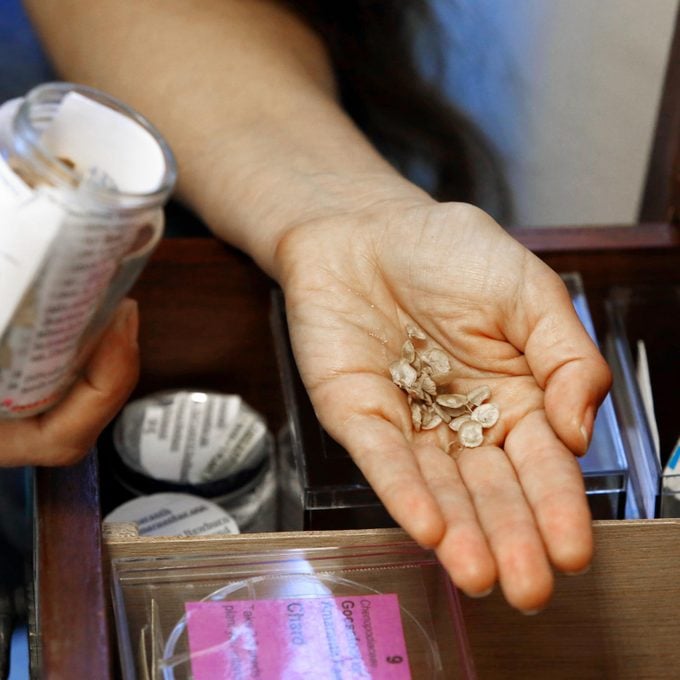What Is a Seed Library?
Updated: Dec. 12, 2023

Who needs the Dewey Decimal System? A seed library is a free community resource, and growing flowers, vegetable and herbs from seeds benefits us all.
When I walked into my new library branch and saw a vintage wooden card catalog cabinet, I was thrilled to learn they repurposed it to house a seed library. Each drawer contained packages of seeds for various flowers, vegetables and herbs. They were free to check out. And unlike a book, I didn’t have to return any seeds after I grew them!
On This Page
What Is a Seed Library?
A seed library is a community resource providing free vegetable, flower and herb seeds to anyone who wants to sow and grow them. The Berkeley Ecology Center opened the first in 1999, cleverly known as the Bay Area Seed Interchange Library (BASIL).
Many seed libraries are housed in public libraries, like mine. Some libraries also host classes and workshops taught by Master Gardeners who explain how to sow and grow various seeds.
Seed swaps are closely related to seed libraries. Gardeners bring their own seeds, which they may have grown and collected themselves, or extra seeds left over from packages they bought. On the designated swap day, gardeners exchange seeds with each other. Often, organizers provide extra donated seeds to “seed” the swap with new varieties.
Some libraries get seeds in bulk from seed banks, i.e. organizations like Seed Savers Exchange dedicated to saving seeds. That way, we don’t lose the biodiversity of older varieties of flowers, vegetables and herbs.
How To Use a Seed Library
Using a seed library can be as easy as checking a book out of a reading library, although most don’t expect you to return unused seeds at the end of the growing season.
Your seed library may limit the number of packets you can take, so don’t plan on it for all your seed needs.
What Kinds of Seeds Can You Get at a Seed Library?

The kind appropriate for growing in your area. Many seeds may be heirloom varieties which are open-pollinated, so it may be possible to save some of the seeds from plants you grow.
Generally, you won’t get as many seeds in a packet from a seed library as you do when you buy seeds. You’ll get just enough to at least try to grow those flowers, vegetables or herbs.
Is There a Seed Library Near Me?
There are seed libraries across the United States and in many foreign countries. Check the seed libraries network site; it’s not comprehensive but it’s a good place to start. Public libraries are the most common location for seed libraries, so call yours and ask.
How To Start a Seed Library
Anyone passionate about saving and sharing seeds can start a seed library. Organizations like Seed Libraries provide information on how to do this. So does Public Libraries Online.
Some of the main considerations for starting a seed library include:
- Where will you put it? Ideally, the seed library should be somewhere that doesn’t require you to be there all the time to take care of it. This makes public libraries ideal; they’re staffed whenever they’re open.
- What types of seeds will you offer and where will you get them? You could solicit donations from a seed bank or seed company, or from gardeners with extra seeds to donate.
- Will you limit how many packets of seeds one person can take? Placing a limit ensures seeds are available for anyone who wants some.
If you don’t want to start a seed library but would like to help with one, offer to volunteer. Seed libraries often need extra hands to repack bulk seeds into smaller packages and distribute seeds to various locations.
